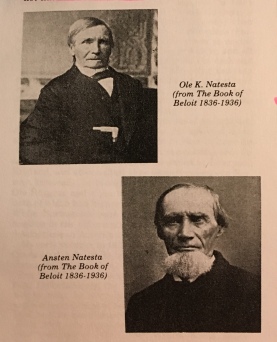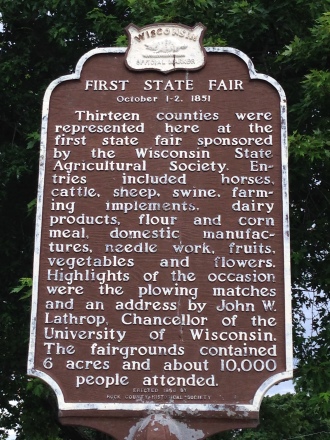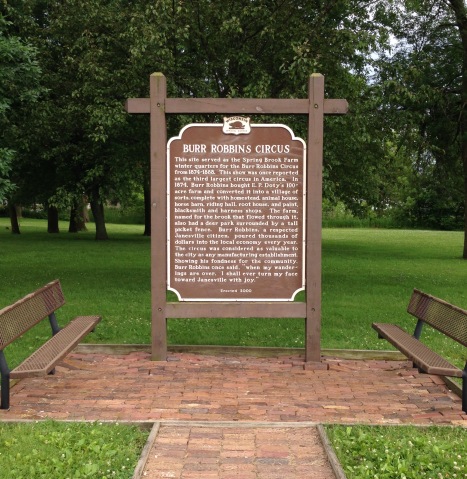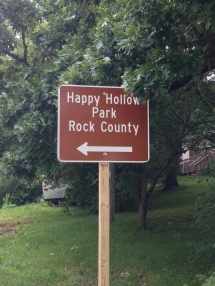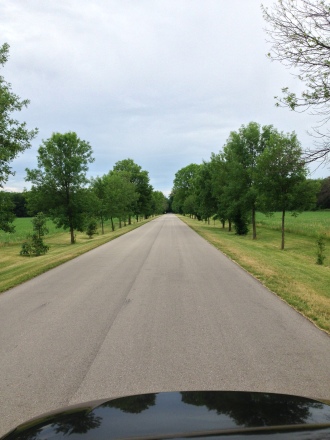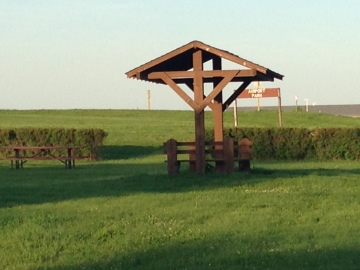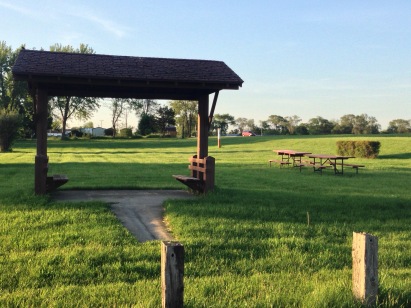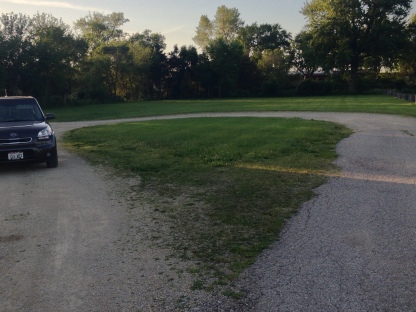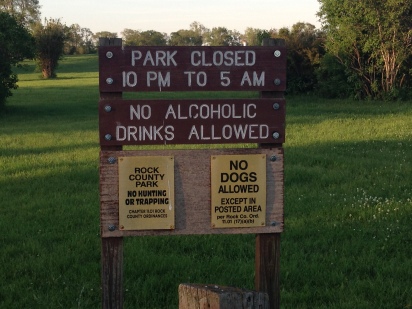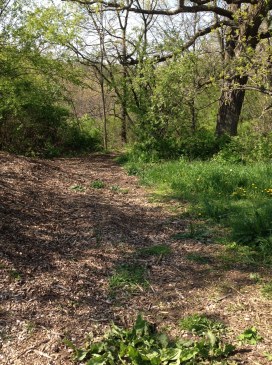Before we move on from the Jefferson Prairie Settlement to new interesting things about Clinton Township the story about a Church on the Prairie must be told.
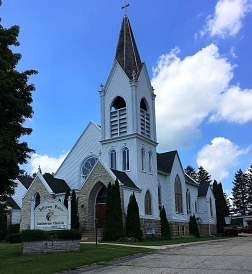
When people move from one country to another to begin a new life they don’t always leave their beliefs and traditions behind, these things are a part of who they are as a people. This held true for the Norwegian community that formed in the southern part of Clinton Township. Their strong religious beliefs were very much a part of their lives.
At the time that the Natesta brothers came to America, Norway had been a Lutheran country for about three hundred years, previous to this the main religion was Catholicism. In 1536 King Christian III of Denmark ordered a conversion to the Lutheran faith, and as Norway was ruled by Denmark they were also ordered to convert. All other religions were shut down or forced out of the country and Lutheranism became a state religion. Being Lutheran was mandatory and so was church attendance.
Now there are state religions all over the world, this is nothing new. Some are very rigid in their belief systems and structure while others give their members more freedom. In this instance though, the state religion was as oppressive as the social structure of the time. All matters of governance of the church was held by the state. Ministers were assigned and paid by the state and had complete control over educating their parishioners. As a government employee they had a great amount of public authority beyond guiding the faithful. Members of the congregation had no voice in what happened within their chruch and were not allowed to participate in any way. This seems out of line for us today, but we must remember that this was the process of faith that had been in place for generations, it was the norm and accepted for the time. Things did change, constitutional amendments were passed allowing more freedom and less governance by the state and other religions were eventually allowed back into the country.
There were no Pastors here in America for those first settlers so prayer services were held in the homes of various members of the community. By 1844 Jefferson Prairie was the oldest and largest Norwegian community and they worked to help form three main congregations. Rock Prairie here in Wisconsin, Long Prairie near Capron Illinois and Rock Run near Durand Illinois. Other churches were formed of course as communities spread but these were the first.
Pastor C. L. Clausen was the first to serve these congregations. In February of 1844 he held two services in Jefferson Prairie in the homes of Erik Gulbrandson Skavlem and Thor Helgeson Kirkejorden. He didn’t do any work to organize formal congregations beyond suggesting the idea. He limited himself to his ministerial functions.
Another Pastor that made his way through the area in 1844 was J. W. C. Dietrichson. He did organize a formal church in Jefferson Prairie and a requirement of inclusion into this congregation was the signing of a document stating four things.
- They would belong to the Norwegian Lutheran Church.
- They would submit themselves to the Norwegian established church procedure.
- They would be obedient to the ordained Norwegian Lutheran Minister in his authority as pastor and spiritual advisor in conformity to the Norwegian church ritual.
- That by signing, they are being added to and acknowledge joining the congregation under the above conditions.
This seems a bit excessive really, these families were already members of the church. Jefferson Prairie welcomed both Mr. Clausen and Mr. Dietrichson to lead their services until 1846 when they joined the Rock Prairie congregation and asked Mr. Clausen to be their pastor.
In 1847 the members of Jefferson Prairie began to think it was about time they had a church of their own. In March of 1848 the decision was made and 55 members pledged a total of $476.31 to build one. They bought two acres of land east of town for $3.10 and drew up the plans. Members of the church provided all the materials and labor. The small church on the hill was dedicated March 28, 1849.
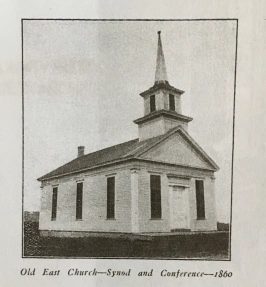
Over the course of the next few years membership in the congregation grew to the point that in 1860 a larger building was needed. This time 53 members pledged a total of $1649.50. Land closer to Bergen was acquired, plans were drawn up and again all the construction was done by church members. It is not known when the church was completed and dedicated but it was said that it came in over budget by $11.00 in 1861. To cover this debt, it was decided later that year at the annual meeting that having an established minimum charge for ministerial services should be put in place.
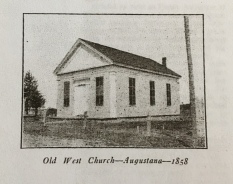
It was around this time that a split began which would break the church apart. The initial cause of the split was within the church doctrine. The pastors brought in to lead their congregation were trained in Norway. It is only natural then that they would be leading the church under those beliefs and rituals held sacred to the home church in Norway. Although their faith was probably strong, these pastors did not see that by the 1860’s many of the immigrants had been here for over 20 years. They spoke English, they were settled onto well-established farms. Their children were American Citizens, and they were in the process of becoming citizens as well. Living around people of differing faiths may have advanced ideas and attitudes toward the process of their faith. Perhaps a service in English rather than Norwegian.
One of the beliefs in question came about when the pastors formed a synod and joined with churches from the south where slavery was accepted. The Jefferson Prairie pastors agreed with the southern body that slavery was not necessarily a sin as well as other theological doctrine relating to school and laymen performing devotional services. Some of the congregation were not pleased with this.
The slavery issue did not go away with the end of the civil war, as a matter of fact it continued to be a sore spot for many members. At the annual meeting in March of 1869, the pastor was asked to explain his stand on the question of laymen participation within the chruch and that of slavery. The response was that they wouldn’t discuss slavery openly anymore. But, it did come up again, more than once and the pastor said it was a fortunate thing that they were brought here to America where they could be converted. Eventually the question of slavery went back to Norway. The response that came back didn’t answer the question.
As time passed other issues came up to divide the congregation even deeper and ultimately in 1871 the church split into two groups and then three. Members of the community remained friends and neighbors for six days a week then separated on the sabbath. Little by little the issues that divided the Jefferson Prairie church faded. Talk began between the groups and as there were no real differences in their core beliefs the church became one again in March of 1892.
After all the legal matters were said and done it was decided that the reunited congregation needed a new church to worship in. The two church properties were sold and that money went to purchase a piece of land across the road from the present church. When construction of the magnificent church that sits at 23184 Bergen Rd was ready to happen, the land was sold and the church built.
I have had the extreme pleasure of visiting this beautiful church and talking with several of its members. They were very open, kind and welcoming to this stranger asking questions. I appreciated their patience and kindness. If you would like to visit, Sunday worship services are held at 8:30 a.m. and 10:30 a.m. with Sunday School and coffee hour at 9:30 a.m. The Jefferson Prairie Church has come a long way but they continue to be good people doing good work.

